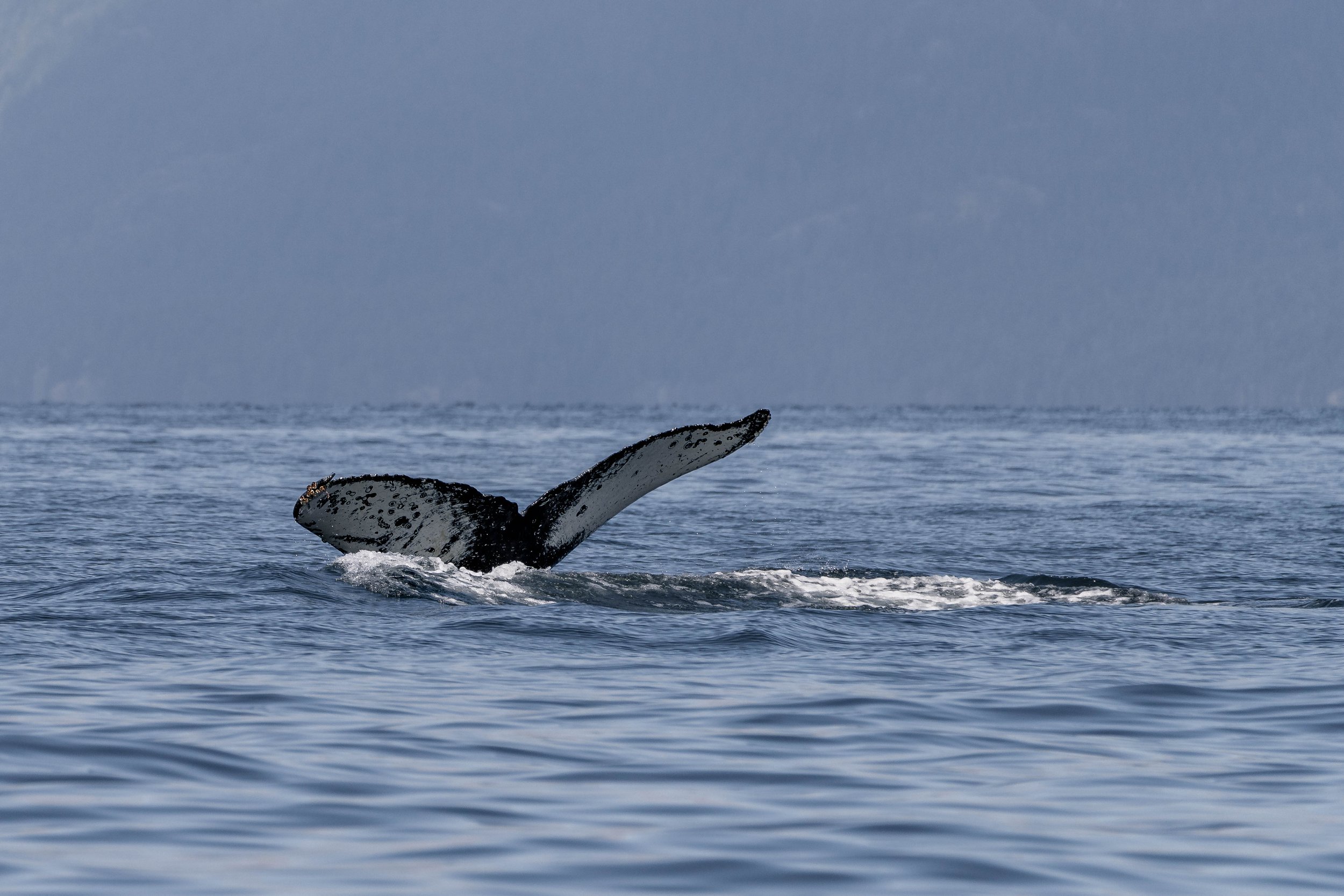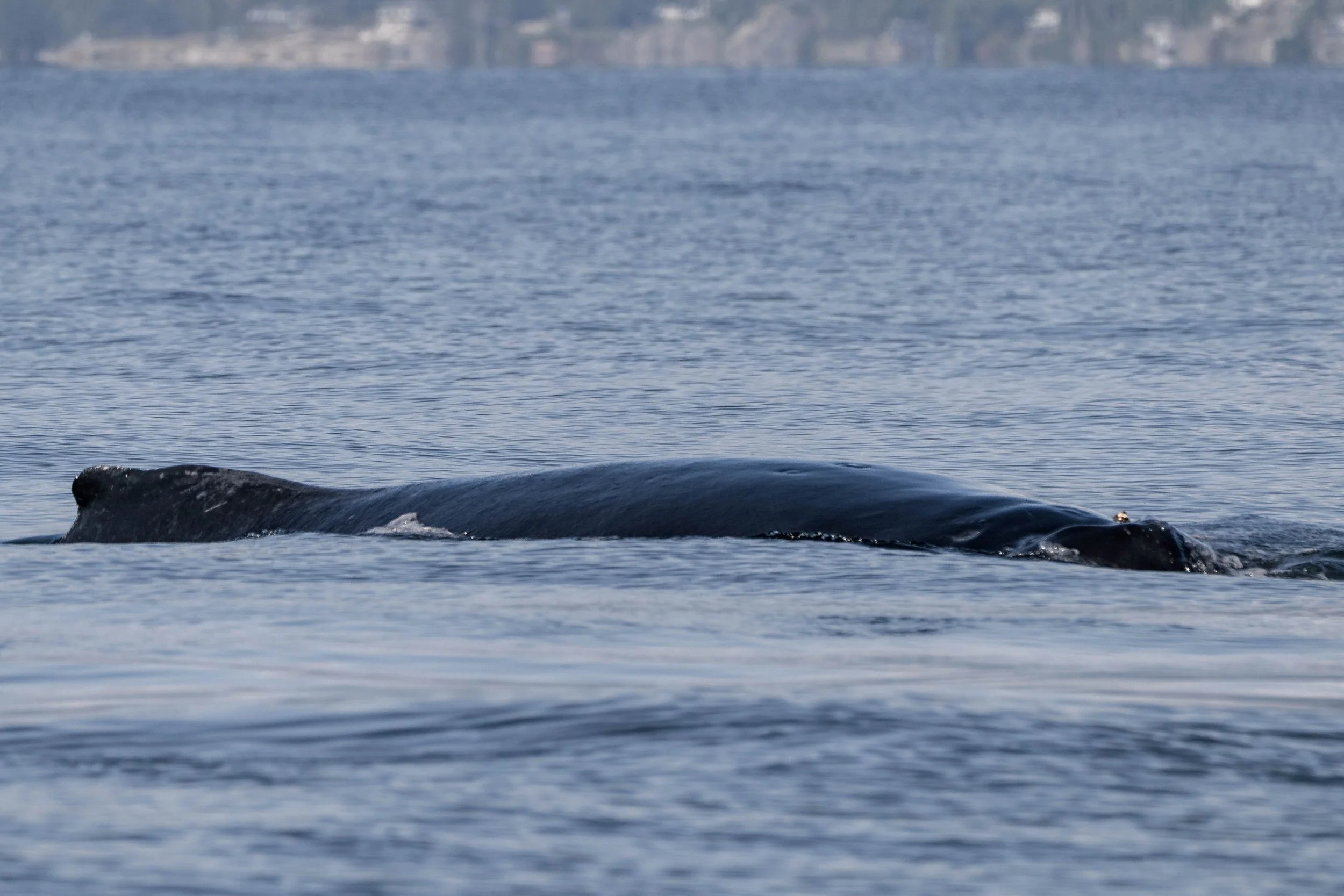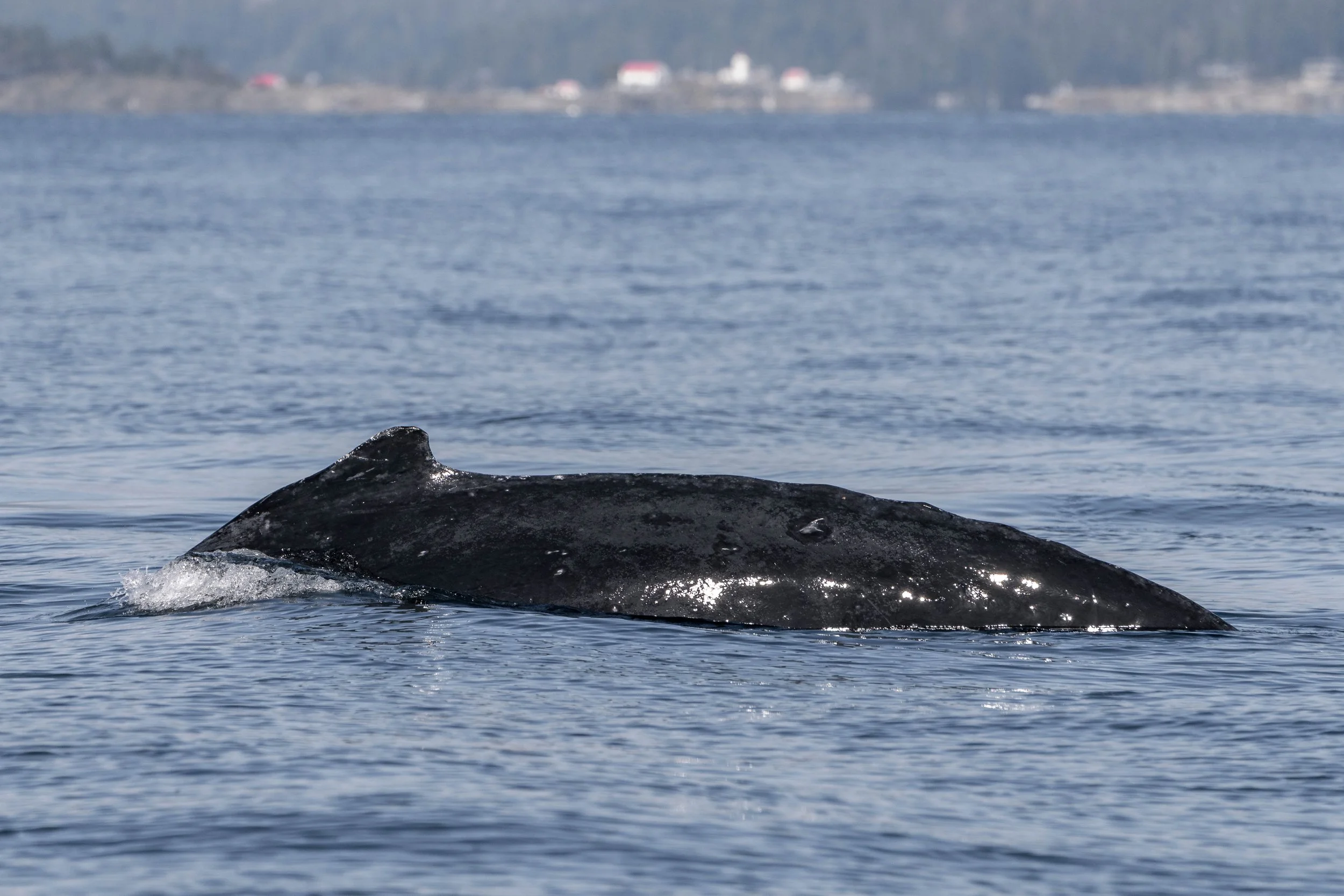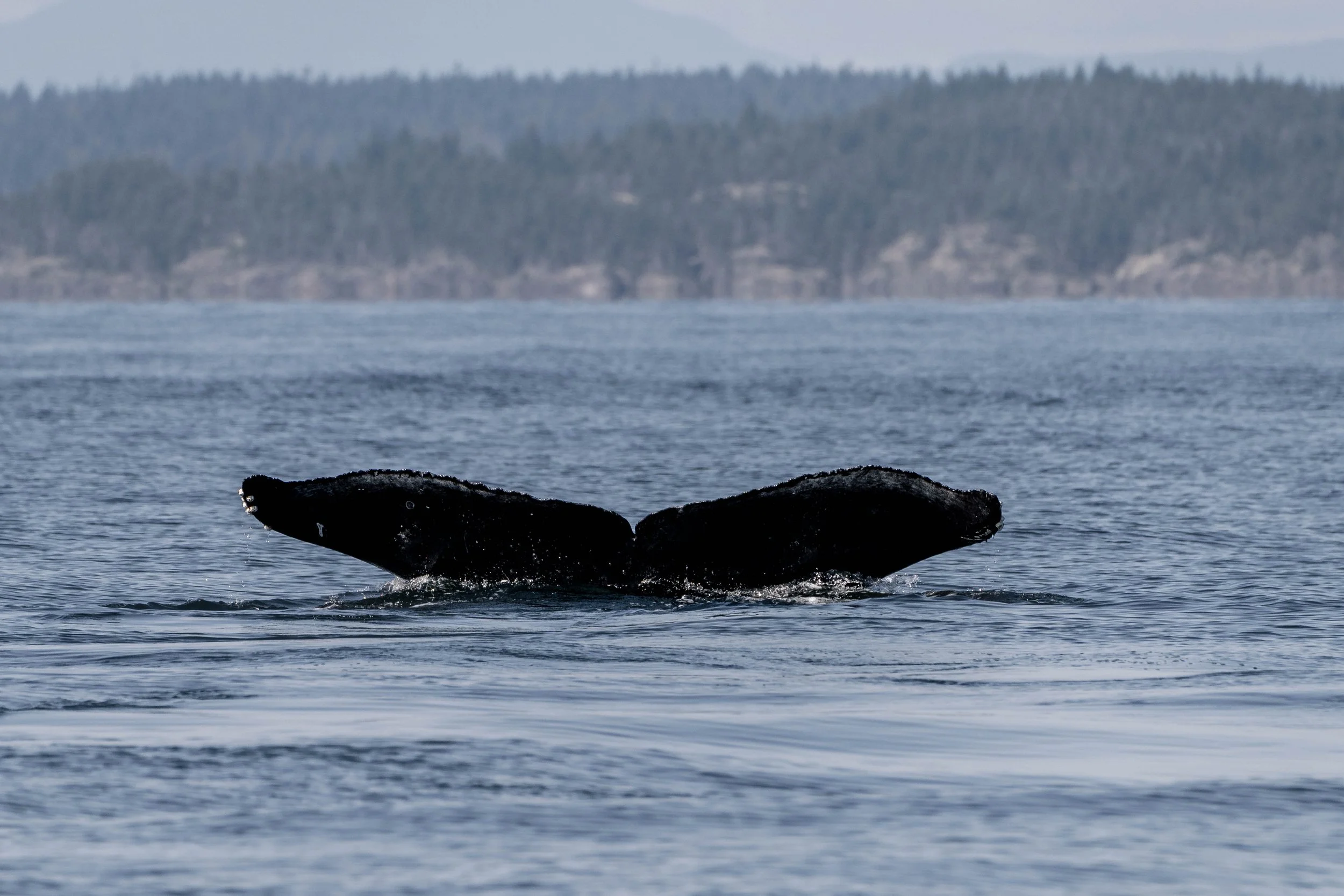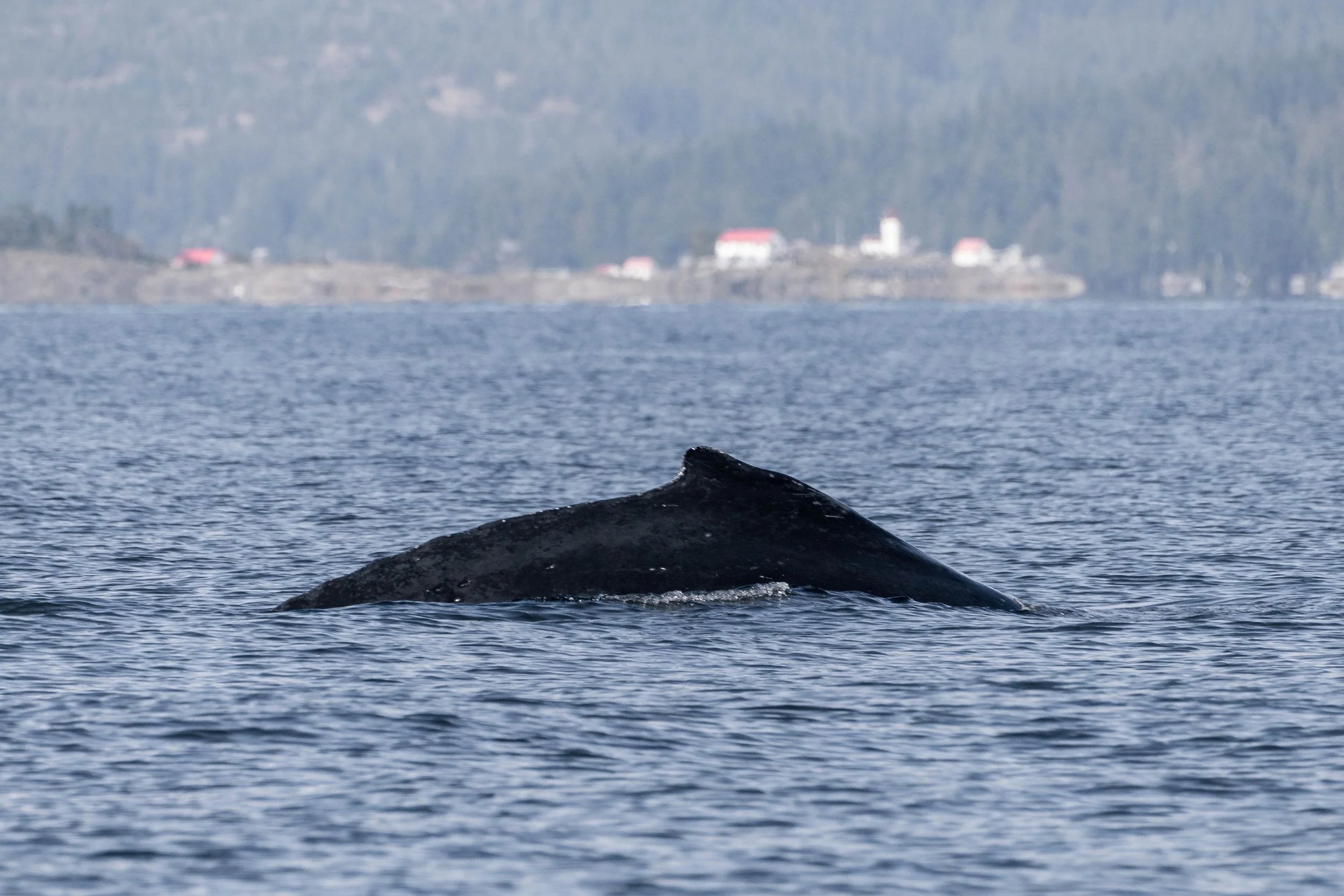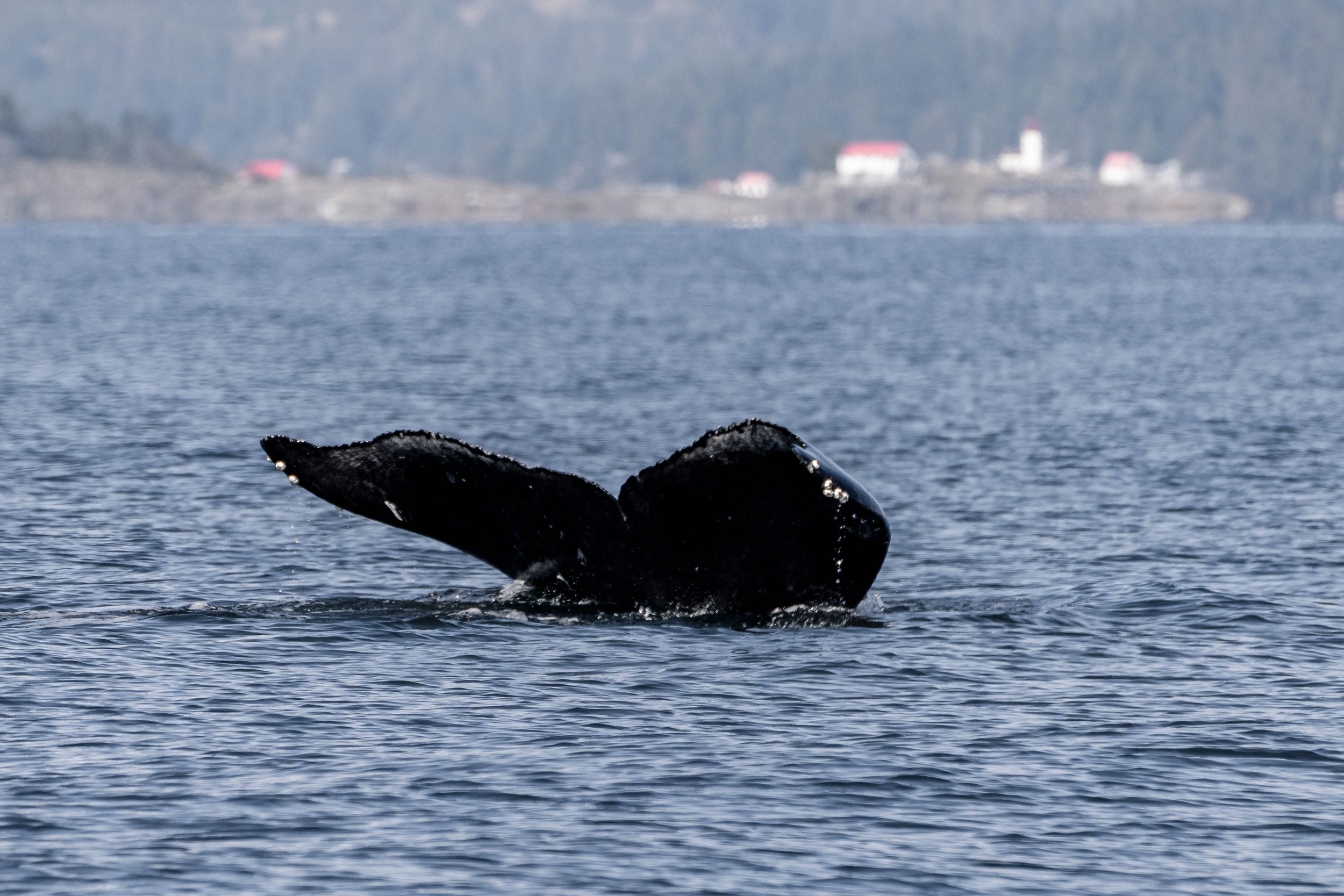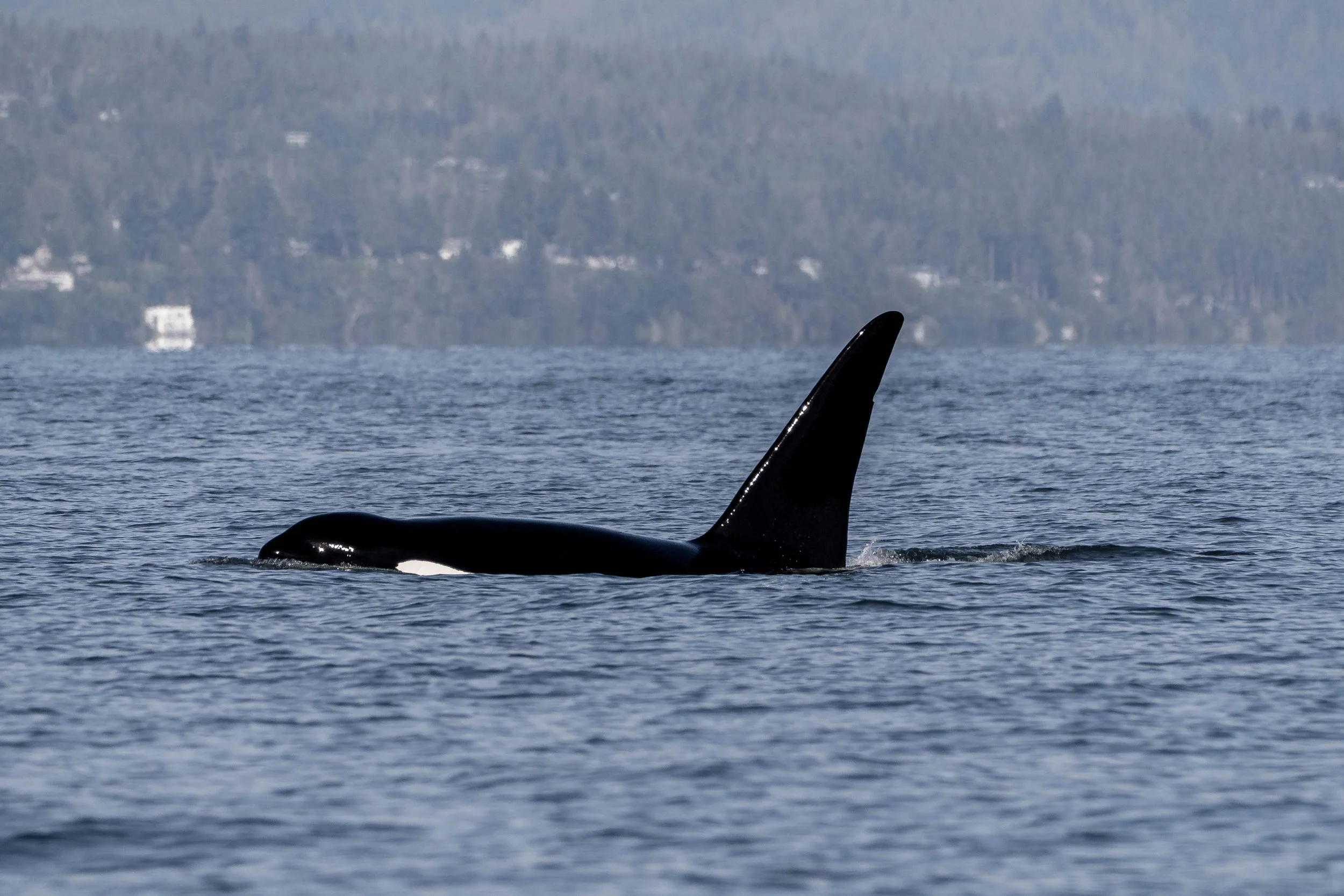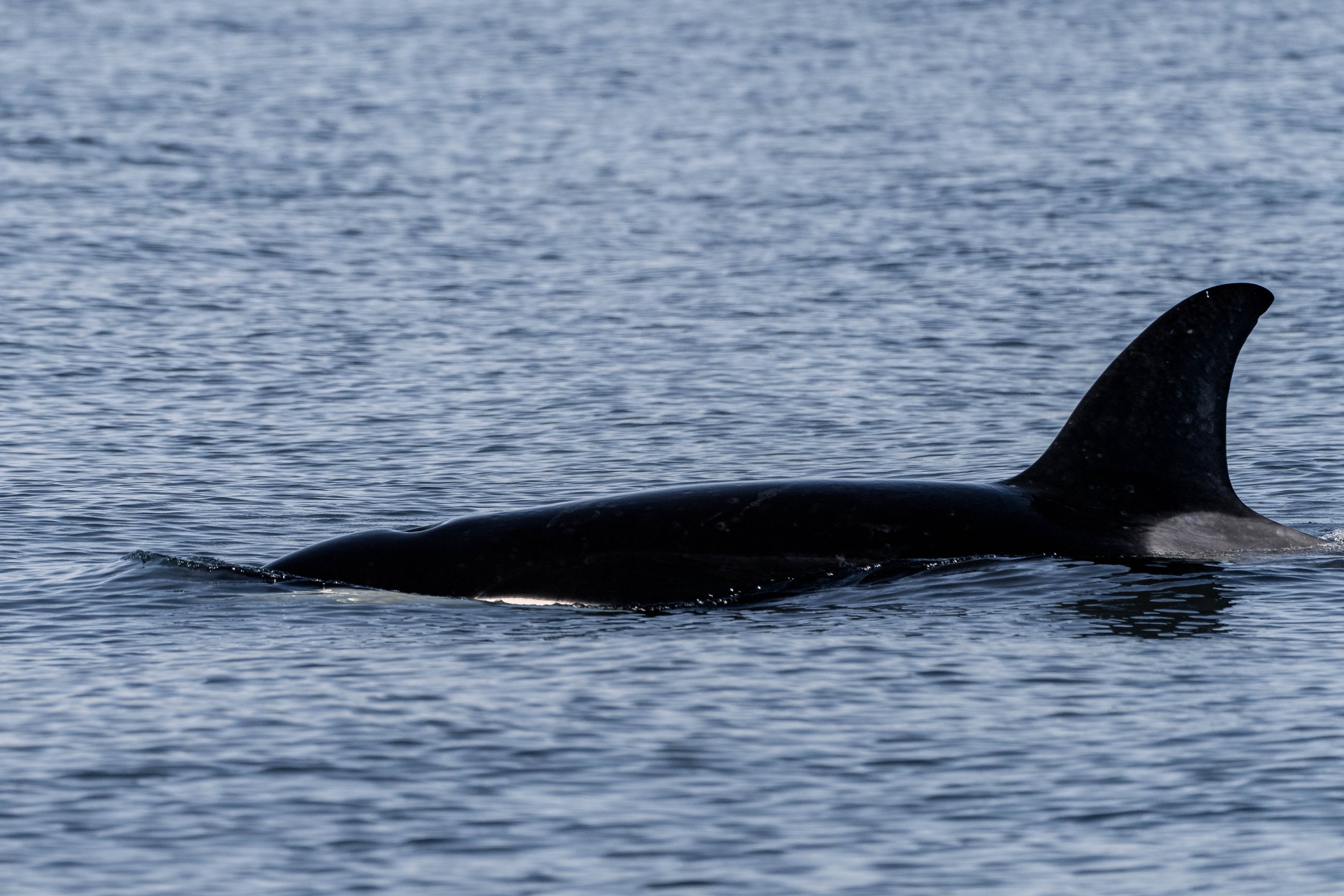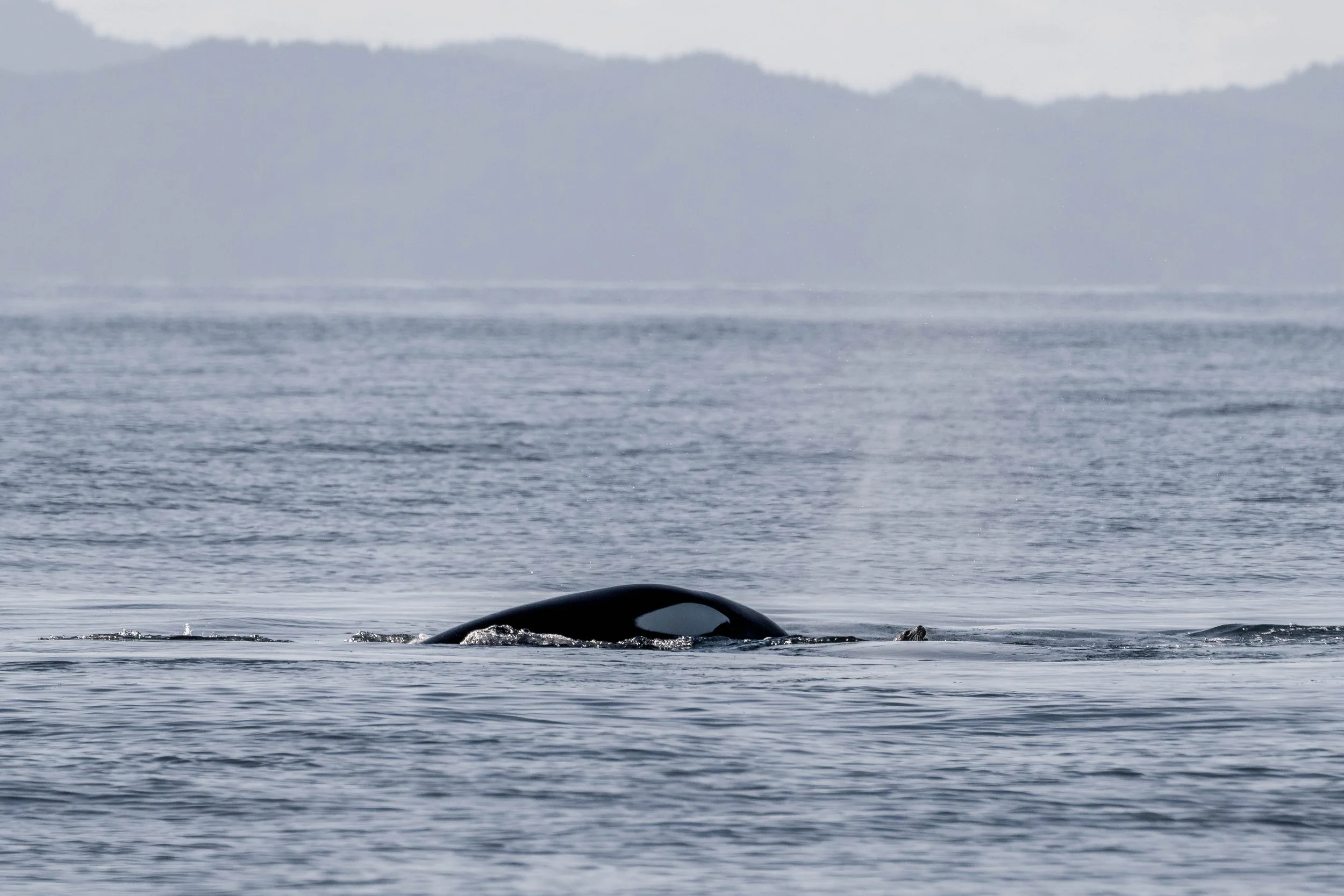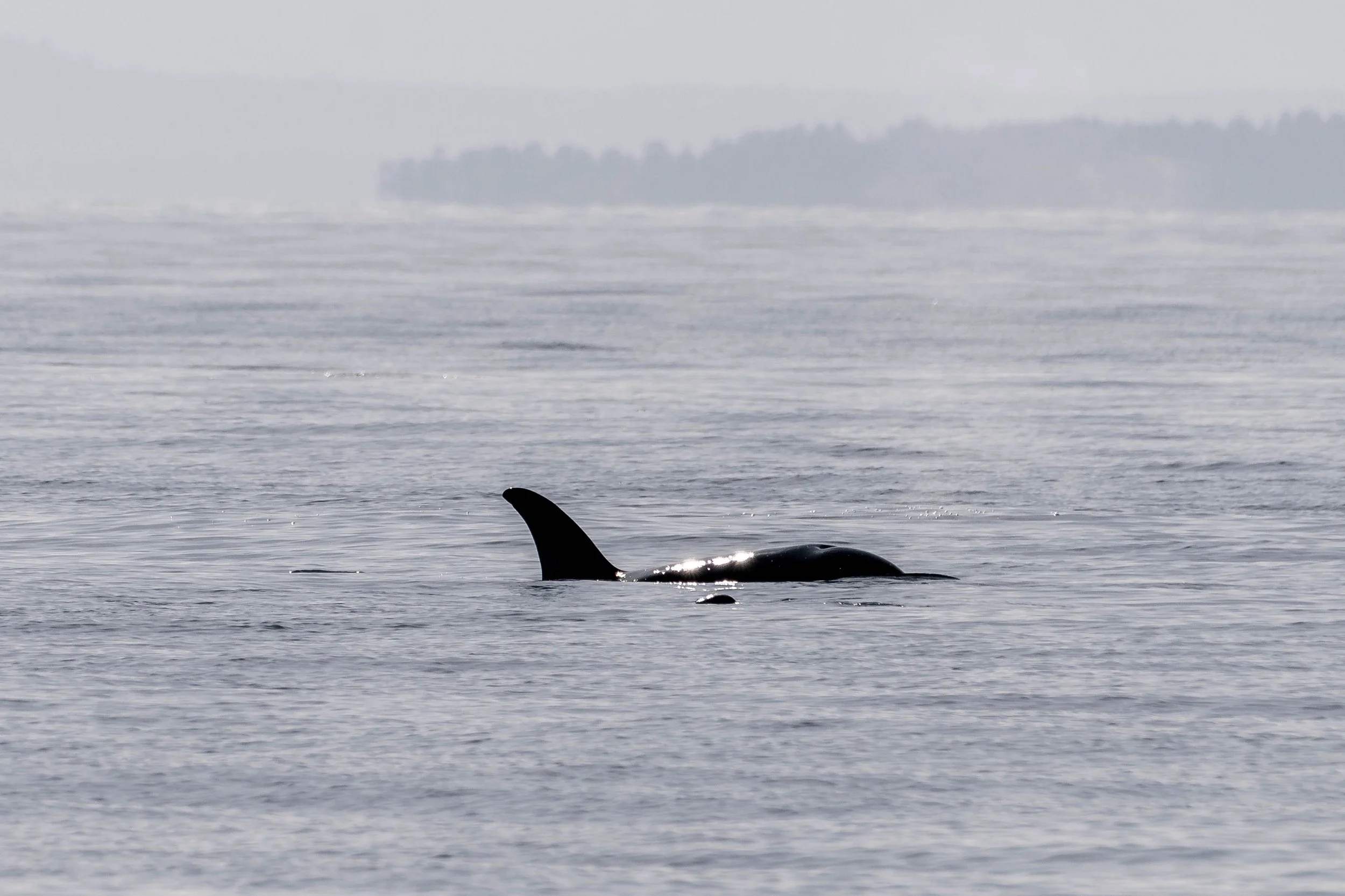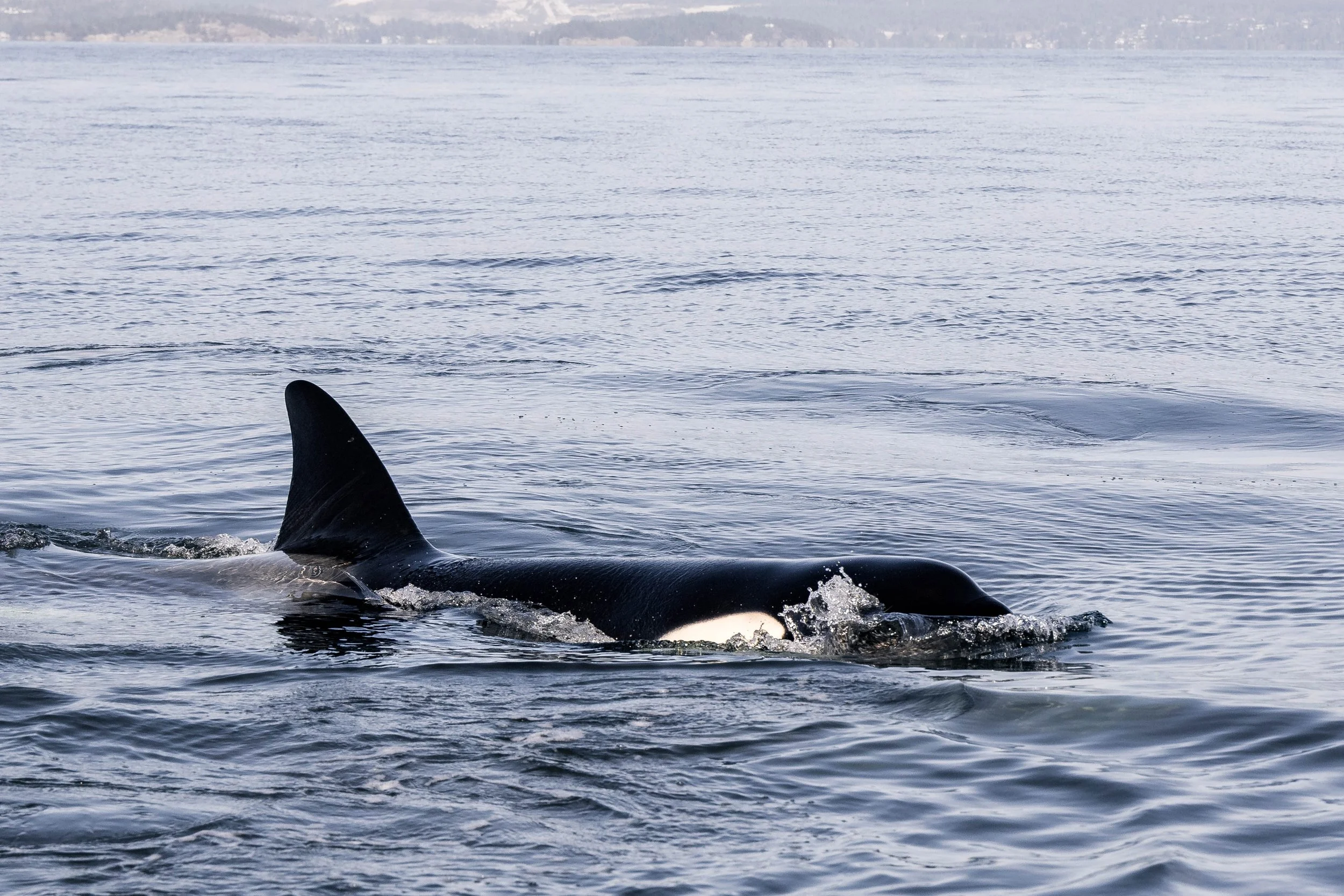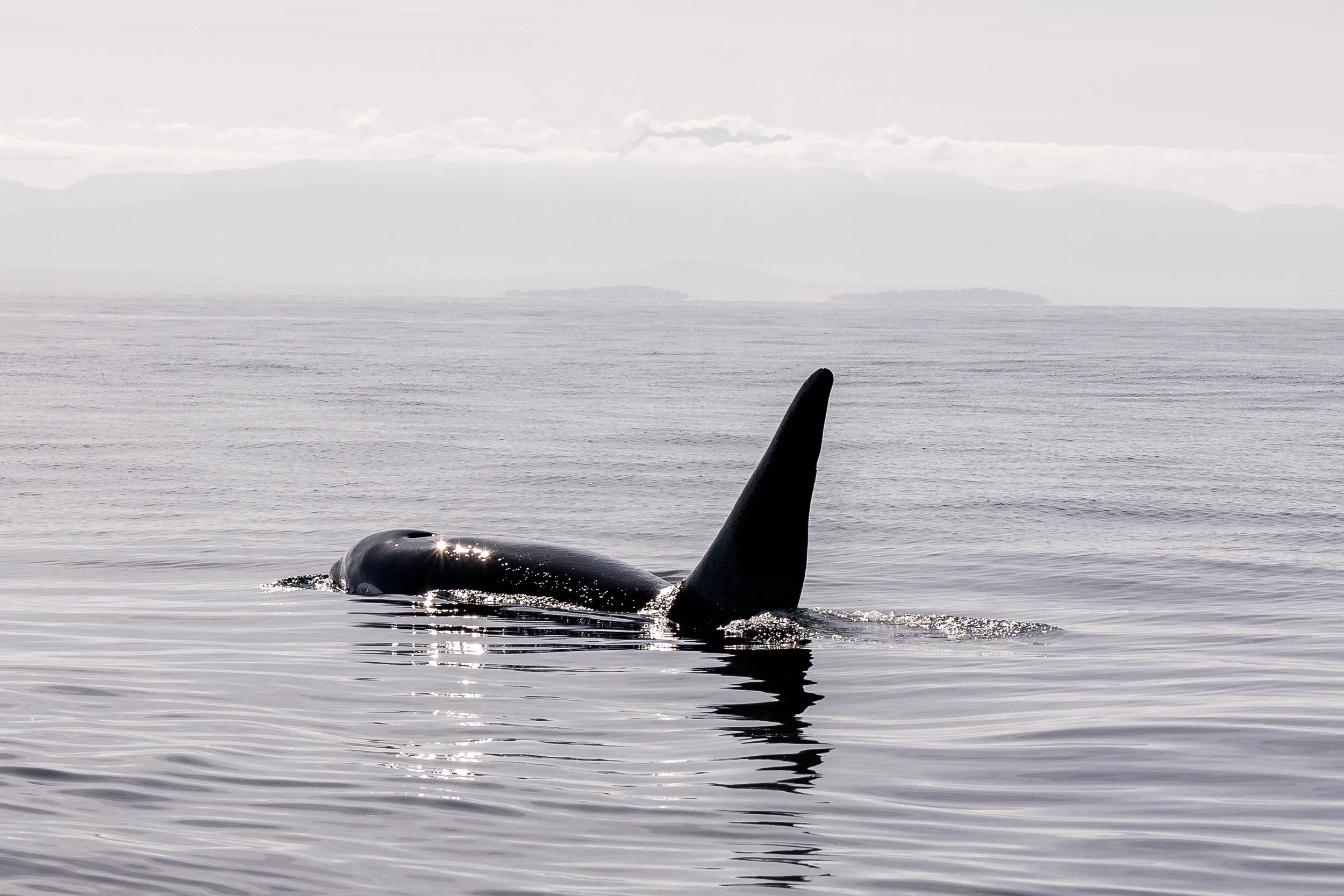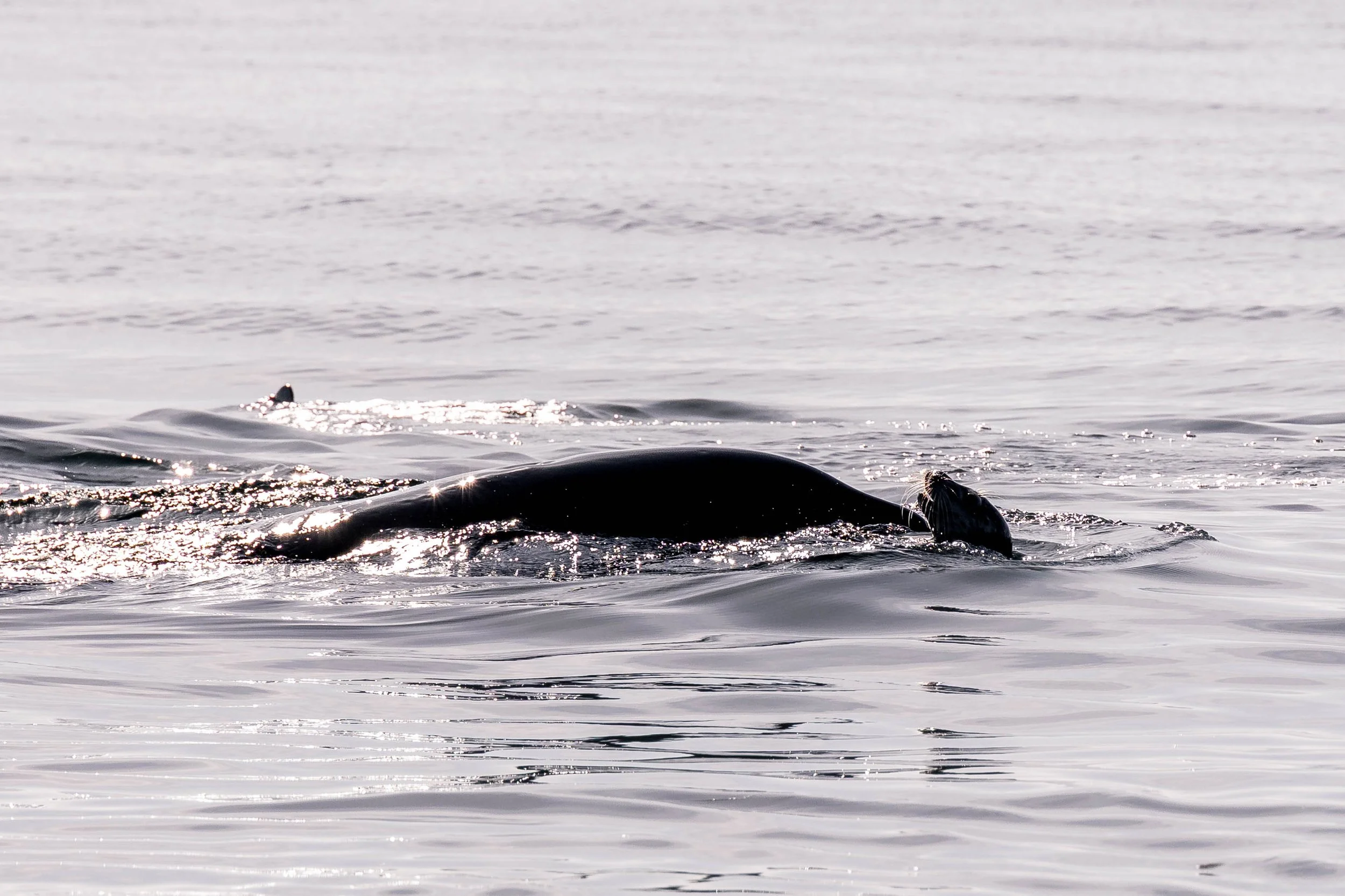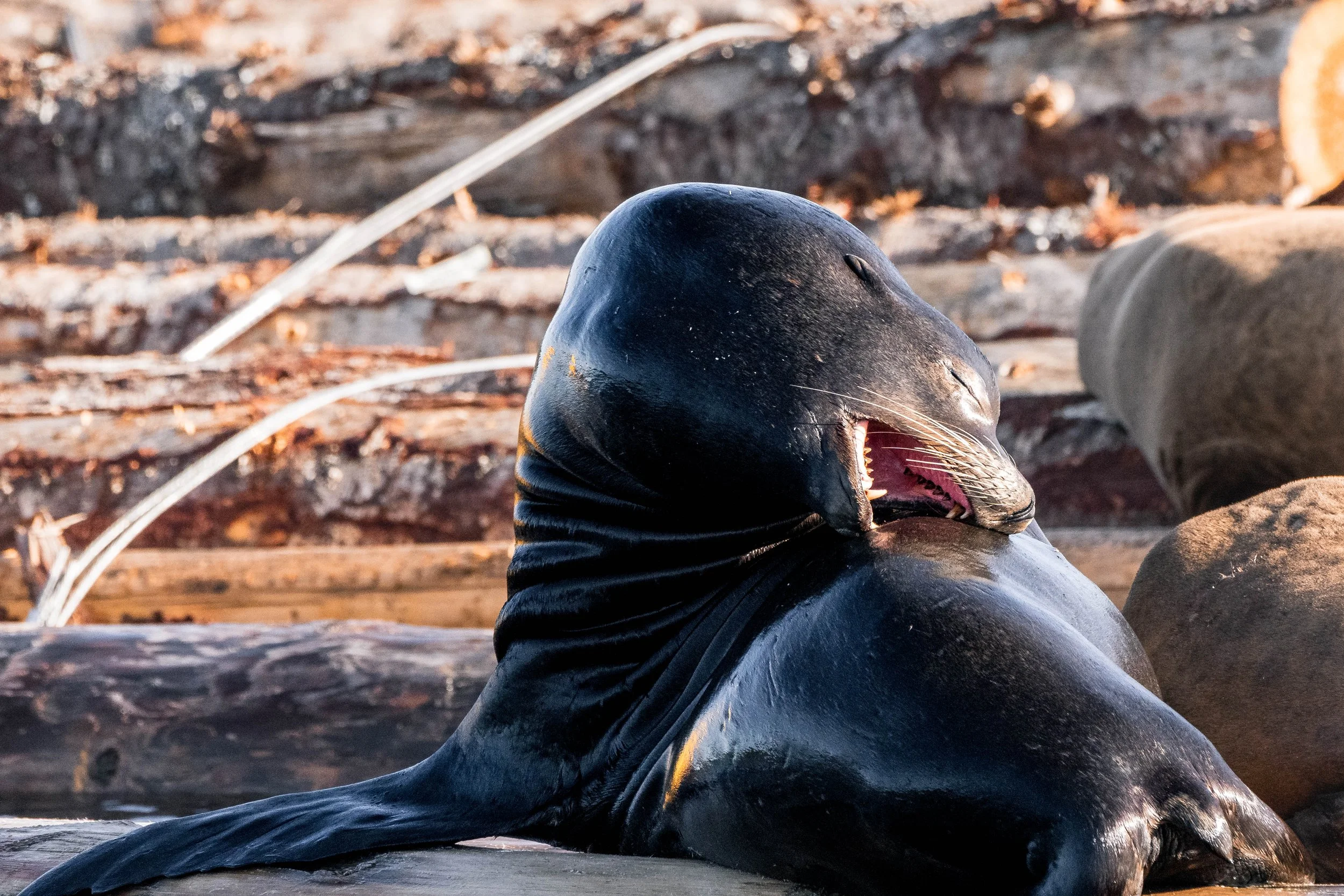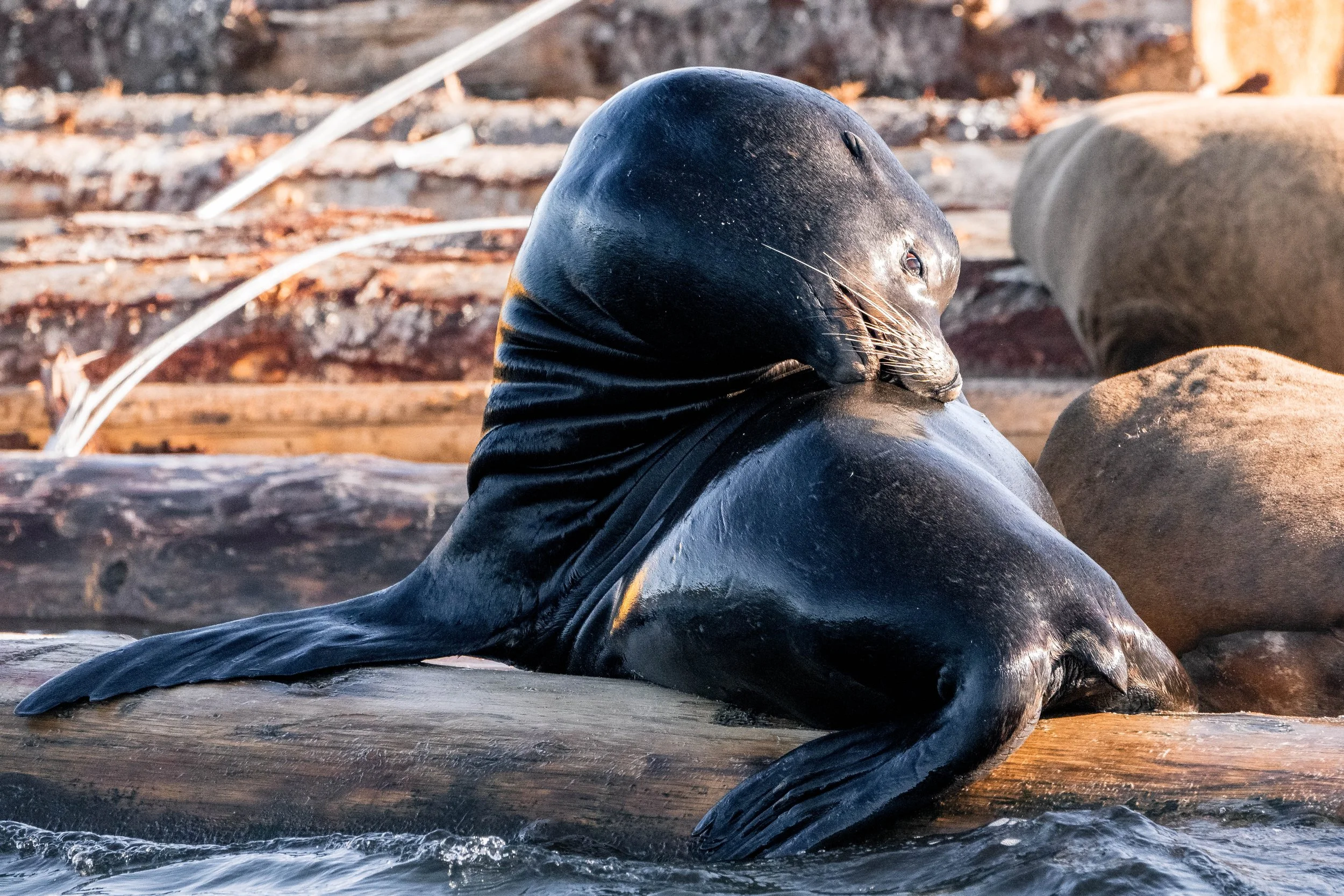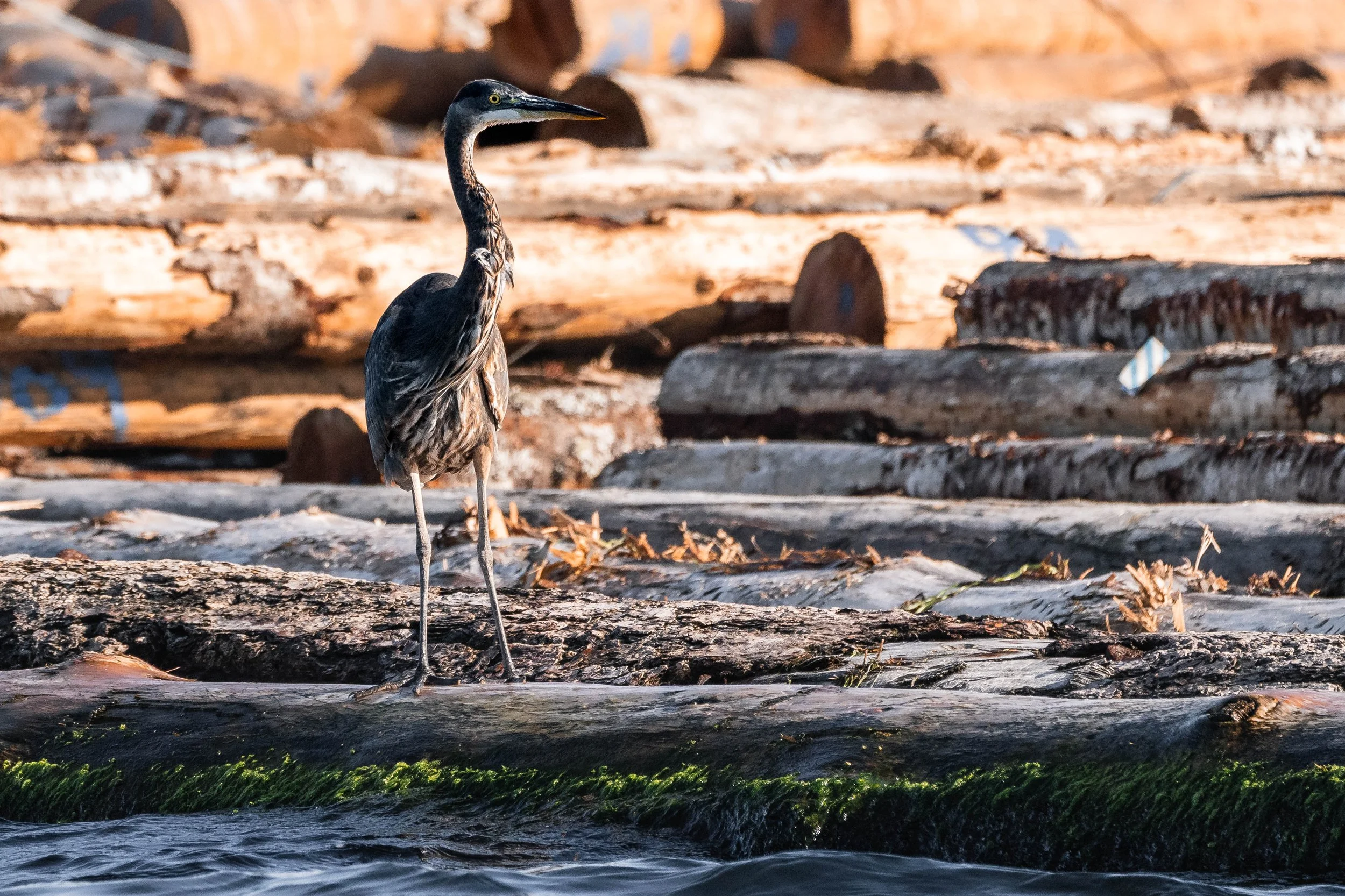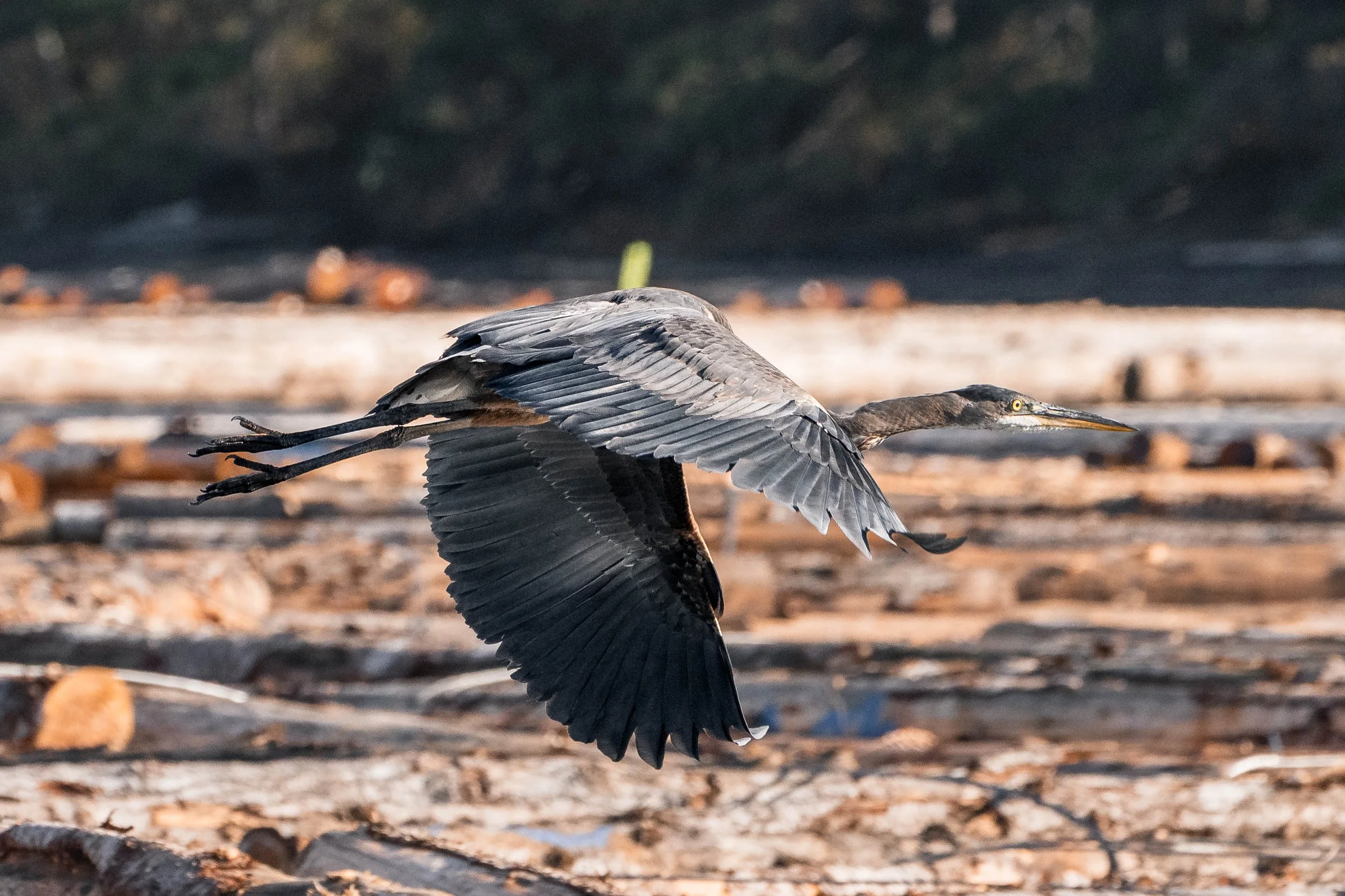September 15, 2025 - A calm sea and a busy day on the Salish Sea
With the entire fleet off the dock and not a breath of wind in the air, the Salish Sea greeted us with glassy calm waters, ideal for whale-watching conditions. We began our morning journey heading north along the shores of Nanaimo, scanning the horizon for the telltale puff of a whale’s exhalation. It didn’t take long before the first blow was spotted, a humpback whale resting at the surface.
This whale proved somewhat challenging to identify at first. It was motionless, surfacing quietly in intervals, showing only the subtle curve of its dorsal fin. Humpbacks often rest like this, drifting just below the surface in a state of half-sleep. Cetaceans, unlike humans, cannot enter a state of deep, unconscious sleep because they need to surface to breathe. Instead, they shut down one hemisphere of their brain at a time, a behaviour known as unihemispheric sleep. While one side of the brain rests, the other remains alert enough to control breathing and stay aware of nearby dangers. During this time, they slow their movements and often appear to hover in place or swim in slow, lazy circles.
After a quiet few minutes, our sleepy whale lifted its fluke, and we had our ID. It was Galaxia (BCZ0573). Once we had confirmed their identity, we left Galaxia to continue their peaceful nap and turned our bows toward the Sunshine Coast, continuing our search under the morning sun.
Just west of Sechelt, Cascadia’s crew spotted another blow. This smaller whale, identified as Raptor’s 2024 calf (BCY0458 calf 2024), turned out to be a yearling humpback. Yearlings like this one are still learning the ropes of independent life after separating from their mothers earlier in the season. From the looks of it, this young whale was feeding, likely lunging through clouds of krill or schools of small fish below the surface. Humpbacks visit the Salish Sea primarily to feed, taking advantage of the nutrient-rich waters that support an abundance of prey through the summer and fall months.
While Cascadia spent time with Raptor’s calf, our semi-covered vessel Kula picked up movement just south of Sechelt, something splashing at the surface. Moments later, tall black dorsal fins broke the calm water. This time, it was a family of transient orca, the T123s, consisting of:
T123 Sidney ♀ (~1985)
T123A Stanley ♂ (2000)
T123C Lucky ♀ (2012)
T123D Darcy ♀ (2018)
At first, the group appeared to be in travel mode, moving steadily and purposefully through the water. Transient orca are always on the move, covering an average of 100 kilometers a day in their constant search for food. These apex predators hunt marine mammals, primarily seals, sea lions, and porpoises, and must remain in near-constant motion to locate their next meal. But before long, the orca’s behaviour shifted. With a sudden surge of speed, we knew immediately that this was no longer a casual commute; they were hunting.
Moments later, a harbour seal surfaced amid the black fins. The orca worked together with precision and patience, driving the seal into deeper water. Transient orca are experts at using the underwater topography of the Salish Sea to their advantage, herding prey into coves, against rocky shorelines, or over drop-offs where escape becomes difficult. This environment, comprising over 400 islands, numerous channels, and steep underwater ledges, provides both refuge for prey and opportunities for predators.
Interestingly, two members of this same family, Sidney and Stanley, were stranded, likely during a hunt, possibly while pursuing seals too far into the shallows. See the video here. They survived, and today they were hunting smart, right where the water was deep, dark, and safe. Witnessing a coordinated hunt like this is a rare and humbling sight, a reminder of just how intelligent and capable these animals are.
After an incredible encounter with this orca family, we made our way toward the White Islets, where we found the noisy and powerful Steller Sea Lions. These massive pinnipeds, the largest of all sea lions, lounged on the rocky outcrops, roaring and jostling for space. Closer to home, their smaller cousins, the California Sea Lions, had gathered on the Harmac log booms, their barks echoing across the still water. A Great Blue Heron stood quietly along logs, patiently fishing for its lunch, a graceful contrast to the boisterous sea lions!
On the way back to the dock, we reflected on what an extraordinary day it had been: two humpbacks, a family of hunting orca, sea lions, and even a heron to round it all out. From the calmest of seas to the most dramatic of hunts, today was a beautiful reminder of how alive the Salish Sea is, from the sleeping giants below to the swift hunters above. Every trip is different, and that’s what makes this coastline so special; there’s always another story waiting just beyond the next island!
Photos by Val Watson, Vanessa Vereschahen, Hayleigh Hilbert.
Galaxia’s beautiful fluke. Photo by Val Watson.
Raptor’s 2024 calf with their blowholes visible above the surface. Photo by Val Watson.
Raptor’s 2024 calf’s dorsal fin. Photo by Val Watson.
Raptor’s 2024 calf’s fluke. Photo by Val Watson.
Raptor’s 2024 calf feeding at the surface. Photo by Val Watson.
Raptor’s 2024 calf’s dorsal fin. Photo by Val Watson.
Raptor’s 2024 calf fluking. Photo by Val Watson.
T123A Stanley with his face above the water. Photo by Hayleigh Hilbert.
T123 Stanley. Photo by Val Watson.
T123C Lucky. Photo by Val Watson.
T123D Darcy. Photo by Vanessa Vereschahen.
T123C Lucky and T123D Darcy. Photo by Val Watson.
Going in for a snack. Photo by Val Watson.
The ladies of the family! Left to right: T123C Lucky, T123D Darcy, and T123 Sidney. Photo by Val Watson.
Circling for their supper! Photo by Vanessa Vereschahen.
T123A Stanley cruising along. Photo by Vanessa Vereschahen.
T123C Lucky. Photo by Vanessa Vereschahen.
T123A Stanley with a picture-perfect background. Photo by Vanessa Vereschahen.
T123A Stanley with a Harbour Seal beside him. Photo by Vanessa Vereschahen.
T123 Sidney and T123A Stanley with the Harbour Seal between them. Photo by Vanessa Vereschahen.
Inching in… Photo by Vanessa Vereschahen.
Grabbing the seal… Photo by Vanessa Vereschahen.
It’s lunch time! Photo by Vanessa Vereschahen.
A Cormorant scooting across the surface of the water. Photo by Vanessa Vereschahen.
Steller Sea Lions at the White Islets. Photo by Hayleigh Hilbert.
A cuddle puddle of Stellers. Photo by Hayleigh Hilbert.
An itchy California Sea Lion. Photo by Val Watson.
Still scratching. Photo by Val Watson.
Gotta make sure you get under the chin too! Photo by Val Watson.
A Great blue heron on the logs. Photo by Val Watson.
Take off! Photo by Val Watson.

